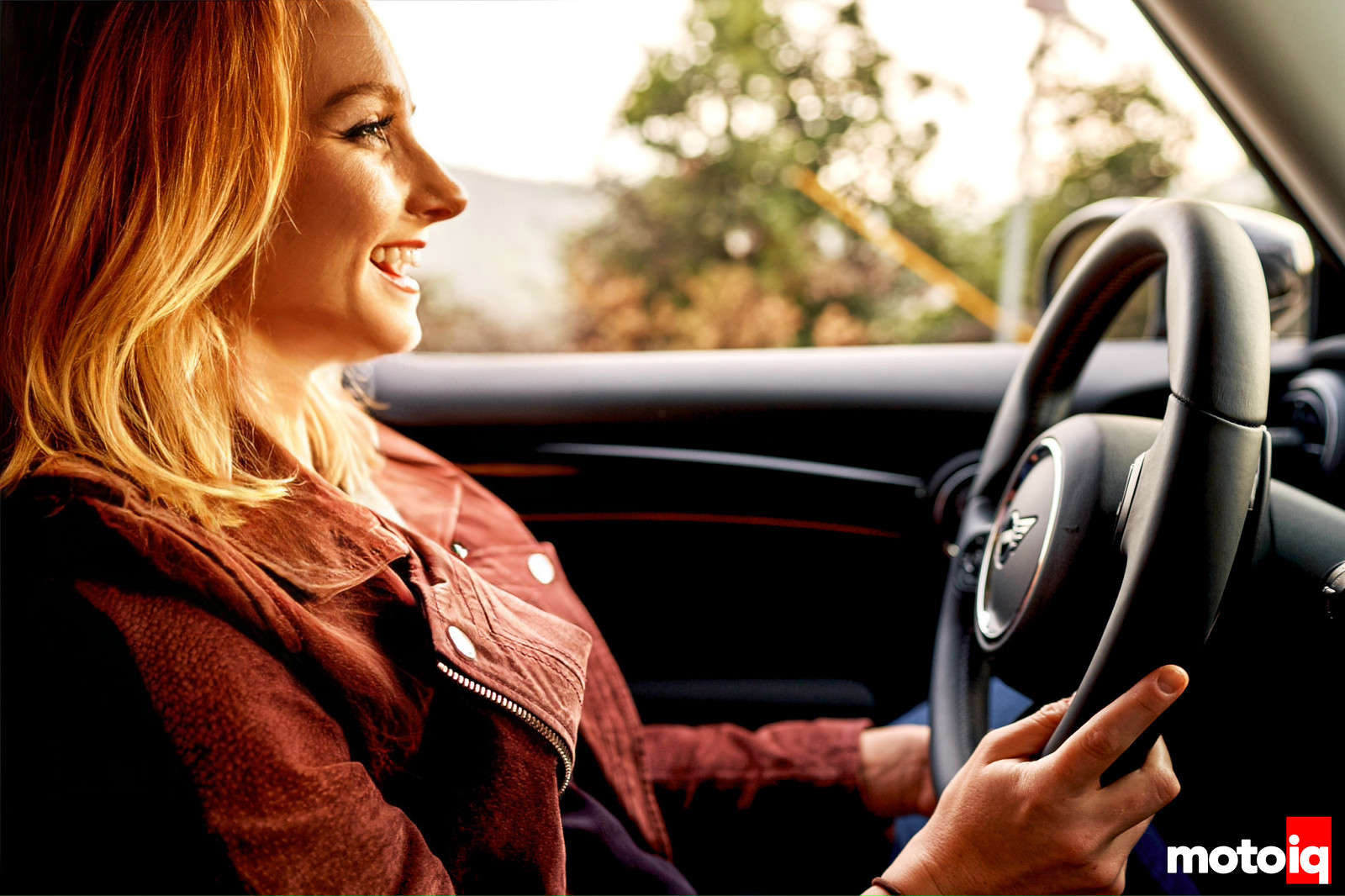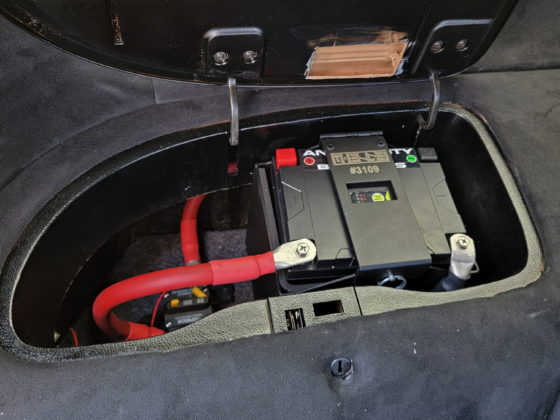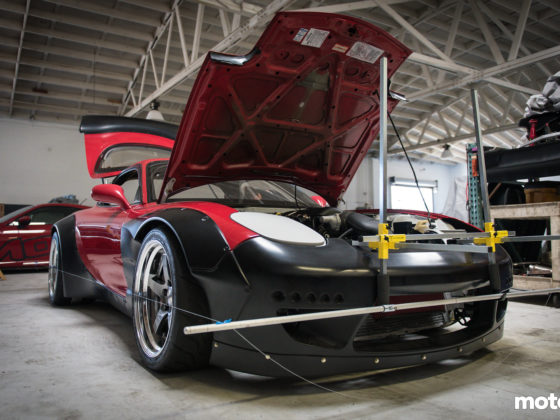6/10
5. Error Prevention
Good error messages are important, but the best designs carefully prevent problems from occurring in the first place. Either eliminate error-prone conditions or check for them and present users with a confirmation option before they commit to the action.
I’ll focus on MINI’s lane collision warning package. This is another set that requires some reading up on the subject. Again, this goes back to the confusing/vague iconography… there are about 4 specific visuals that will appear to either let you know something good or bad related to the cars around you.
Clear to change lanes: small green icon
Not cleared: no visual at all (and therein lies the problem)
Getting too close to someone in front of you: large red icon
Getting WAY too close to someone in front of you: same red icon, just with sound
So here are my concerns with the lane departure setup. For one, anything involving another car means potential for crashes. You need to be so concise with your communications here for obvious, crucial reasons. The default scenario, ideally, is that there is no danger. Therefore, there should either be one of two setups (assuming no accessibility impairments):
a. No alerts for when the driver is clear to change lanes, red iconography with a “danger” sound for when the turn signal is active and the driver is not clear to change lanes
b. Concise alert and accompanying sound for both scenarios as to be explicit when good is good and when bad is bad
Second, for the proximity alerts, again, my concern is consistency in the messaging. If there’s an added sound effect that’s more of a delayed and secondary message to indicate the difference between being kind of close behind someone and WAY TOO CLOSE, I’m gonna need some visuals of the same severity to get that message across. What if I’m deaf? How would I know the difference between a casual and serious concern? I’d want to see these visuals and sounds be more explicit and consistent, regardless if it had autopilot or not.
5/10
6. Recognition Rather than Recall
Minimize the user’s memory load by making elements, actions, and options visible. The user should not have to remember information from one part of the interface to another. Information required to use the design (e.g. field labels or menu items) should be visible or easily retrievable when needed.

Let’s focus on MINI’s gorgeous 8-inch touchscreen display. The digital information architecture, or how the content is structured, makes total logical sense. Not only is it accessible by touch, but there’s an additional haptic scroll wheel and buttons at arm’s level if you’d rather access the content that way. This is an area MINI did an exceptional job in. Drivers need haptic feedback, our love language is physical touch. So, being able to rely on that physical interaction with all the controls in the digital environment paired with a menu that makes sense is just *a chef’s kiss*.
10/10
7. Flexibility and Efficiency of Use
Shortcuts — hidden from novice users — may speed up the interaction for the expert user such that the design can cater to both inexperienced and experienced users. Allow users to tailor frequent actions.

My instant thought here is the auto-manual driving experience with the paddle shifters. That’s just pure fun right there, but also totally inviting to the “just get me from Point A to Point B” drivers as well.




6 comments
“In essence, the shifting experience is literally in reverse order of what most cars have.”
If by that You mean shifting gears in manual mode, in essence ALL other cars are in reverse order compared to the sequential transmission shift pattern they are trying to emulate. In my experience, the BMW order is more enjoyable.
Think of it this way: if You are pushed in the seat by the 630hp Your BMW M5 CS puts to the ground, is it easier to select the next gear by trying to push your hand forward or just stay in position and pull the shifter back?
Also, drag cars have their brake parachute deploy by pulling the lever from back to front. Because race cars need to be intuitive. Why that hasn´t trickled down to passenger cars, I can not fathom.
Thank You for the article.
Lane Assist, Front Collission Assist etc messages in newer cars also make my blood boil.
Thanks for the tip! As for that sort of micro action determination with ideal shifting direction…I think it depends on a couple of factors:
1. What shifting experience has the driver already had? Are they new to driving, and if not, what driving background do they come from?
2. A/B testing. I’d imagine this difference in preference would take slivers off process timing, but again, it would have to be tested in order to determine what’s optimal.
Really, it depends on the driver’s current state and what we have to work with around that.
Glad to hear I’m not the only one who gets triggers by some of these notifications 😂
-Em
The shift pattern comes from motorsports. If you watch old school F1, WRC, and Indycar when they still had sequential shifters, pushing forward is to downshift and pulling back is to upshift. This pattern allows the motion to follow the current direction acceleration. Modern F1 cars pull like 5Gs on the brakes, but I figure the old school ones probably still pulled 2-3Gs on the brakes. Much easier to push forward on the shifter to downshift while braking than trying to pull back against 2-3G of force. Mazda and Porsche have the same motorsports biased shift pattern 🙂 It’s a similar situation on motorcycles. The street shift pattern is one down (to go from neutral to get into first gear) and five up to work up to 6th gear. This is all fine and good on the street and it’s easier to push down to get into first gear from neutral when getting ready to leave from a stop. But the motorsports shift pattern is one up, five down. So upshifts are completed by pushing down in the shift lever while accelerating and downshifts are executed by pulling up while braking. These directions of action align with the G forces the rider will be experiencing.
I don’t have specific comments on this Mini, but speaking as someone working on race car dash/interface stuff, I think your articles are going to provide a lot of interesting food for thought. I look forwards to more!
Thank you, Dan! That’s so kind. Definitely let me know if there’s anything specific you’d want to see in future articles…I love talking to other fellow dashboard nerds 🤓
In this immediate case I’m messing with AEM CD7 stuff for a pure race car, and essentially trying to think through how to set up the main screen to have it amplify the sort of information that gets checked more often or that should be called to attention while having lower priority stuff available to be checked when there’s more time.
… which largely ended up cribbing from the C7R GTE dash layout but I do prefer to do better educated ideas than “monkey see, monkey do” 😉